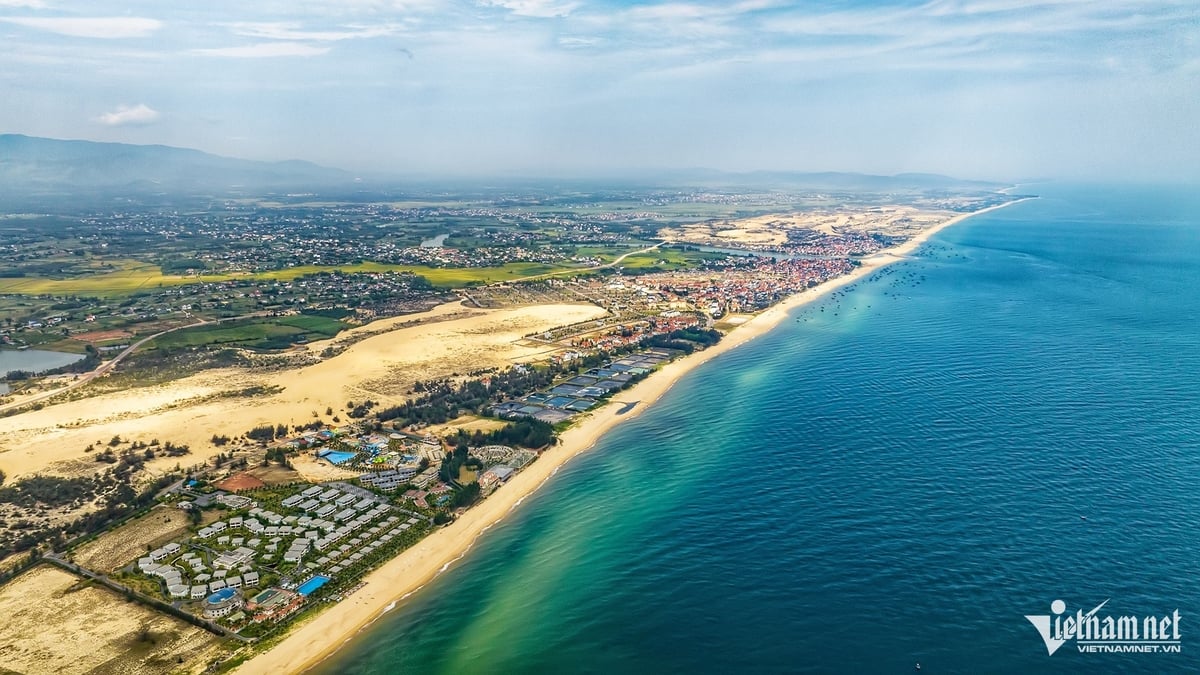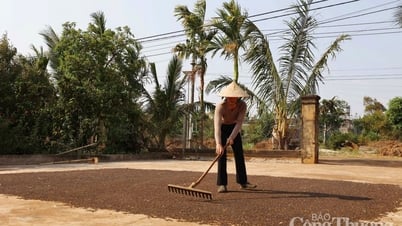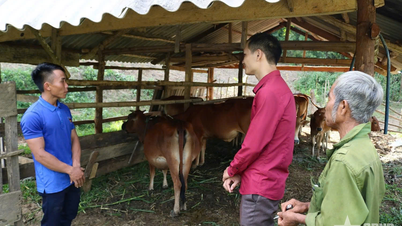The 11th Central Conference approved the merger of provinces and centrally-run cities. It is expected that Lam Dong, Dak Nong and Binh Thuan provinces will be merged and named Lam Dong province, with the political and administrative center located in the current Lam Dong province.
Currently, Lam Dong and Dak Nong are in the Central Highlands region with natural land areas of 951.3 thousand hectares and 650.9 thousand hectares, respectively. These two localities have advantages in developing strongly in agriculture and services. In particular, in the agricultural sector, Lam Dong and Dak Nong are both large-scale growing areas of durian, coffee and some other industrial crops.
In addition, Lam Dong and Dak Nong also have the largest bauxite mineral reserves in the country.
Meanwhile, Binh Thuan is located in the Central Coast region with an area of 794.3 thousand hectares, with strengths in developing agriculture, forestry and fisheries, industry and services.
After "coming under one roof", the new Lam Dong province (tentative name) will have a natural area of up to 2,396.5 thousand hectares, becoming the province with the largest area in the country (formerly Nghe An province).
Before the merger, what were the notable points about the economic scale of these three localities?
According to preliminary data from the General Statistics Office, the scale of GRDP (gross regional product) at current prices in 2023 of Lam Dong province reached 116,179 billion VND, nearly 2.5 times higher than that of Dak Nong province (46,508 billion VND). Meanwhile, GRDP in 2023 of Binh Thuan province reached 114,046 billion VND, only 2,133 billion VND lower than Lam Dong.
Regarding domestic budget revenue in 2023, Lam Dong will reach 12,787.9 billion VND - higher than the total domestic budget revenue of both Dak Nong (2,871.7 billion VND) and Binh Thuan (9,362.1 billion VND) provinces combined.
The GRDP structure of these three localities is generally quite similar, with distribution among the main economic regions.
Specifically, in Lam Dong, the agriculture, forestry and fishery sector accounts for 37.4% of the GRDP structure; the industry and construction sector accounts for 19.6%; services account for 37.7%; product taxes minus product subsidies account for 5.1%.
In Dak Nong, the corresponding proportions are 39.82%; 19.72%; 36.61% and 3.85% respectively.
In Binh Thuan province, the agriculture, forestry and fishery sector accounts for 24.9%; industry and construction account for 36.84%; services account for 32.94%; and product taxes minus product subsidies account for 5.32% of GRDP.
Notably, the average GRDP per capita in these three localities, although increasing rapidly in the 2019-2023 period, is still lower than the national average (VND 102.9 million/person/year).
According to preliminary data in 2023, the average GRDP per capita of Lam Dong province reached 86.4 million VND/person/year, 16.5 million VND lower than the national average.
Similarly, the average GRDP per capita of Dak Nong reached 68.4 million VND/person/year, Binh Thuan reached 90.6 million VND/person/year, respectively 34.5 million VND and 12.3 million VND lower than the national average in 2023.
Regarding foreign direct investment (FDI), preliminary statistics in 2023 show that Dak Nong province did not attract any FDI projects.
In Lam Dong province, there are 2 licensed projects with a total registered capital of 1.4 million USD, implemented capital of 15.3 million USD - including disbursed capital from previously licensed projects.
Meanwhile, Binh Thuan province recorded 3 licensed FDI projects during the year, with total registered capital reaching 1.34 billion USD and realized capital reaching 127.6 million USD.
These three localities have strengths in agriculture, forestry, fisheries and services, so their export turnover is still relatively modest compared to many other provinces and cities in the country.
According to preliminary statistics from the Customs Department, in 2023, the export turnover of goods of Binh Thuan province reached 760.9 million USD; Lam Dong reached 564.4 million USD; and Dak Nong reached 100.3 million USD.
Compared to 2022, Lam Dong province alone recorded a growth rate of nearly 14.3%. Meanwhile, export turnover of Binh Thuan and Dak Nong decreased by 7% and 10.3% respectively.
(The article uses data from Socio-economic Data of 63 provinces and centrally-run cities 2019-2023; data in the 2023 Statistical Yearbook of the General Statistics Office; Preliminary import-export statistical report of the Customs Department).
Source: https://vietnamnet.vn/lam-dong-dak-nong-binh-thuan-sap-nhap-thanh-tinh-lon-nhat-kinh-te-ra-sao-2392581.html





![[Photo] Prime Minister Pham Minh Chinh chairs Government Standing Committee meeting on Gia Binh airport project](https://vphoto.vietnam.vn/thumb/1200x675/vietnam/resource/IMAGE/2025/5/10/6d3bef55258d417b9bca53fbefd4aeee)





















































































Comment (0)